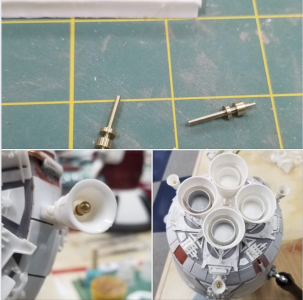- Joined
- Dec 20, 2012
- Messages
- 9,422
...and sharp HSS cutting tools.
Okay, and that, too.
...and sharp HSS cutting tools.
2) Why is a small lathe better suited for making parts like this? Is it because of the mass of the carriage? Do the smaller lathes have higher spindle speeds and finer control? It's unclear to me why a smaller lathe would make it easier to create this part over a hobby sized lathe like the SB9a. What am I missing??
Wildo: why can't you take a 50 thou cut on your SB? It should do it I would think
No question about it. And it's an area I really want to improve on. I'm hoping to win a pedestal grinder in an auction here in the next few days.I suspect the tool is another key reason for the reduced performance of your lathe, Will. Carbide on a small lathe just doesn't work as well. Maybe time to jump into HSS tool grinding?

